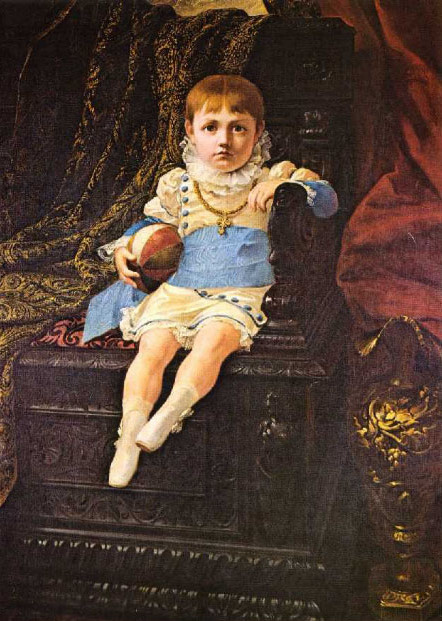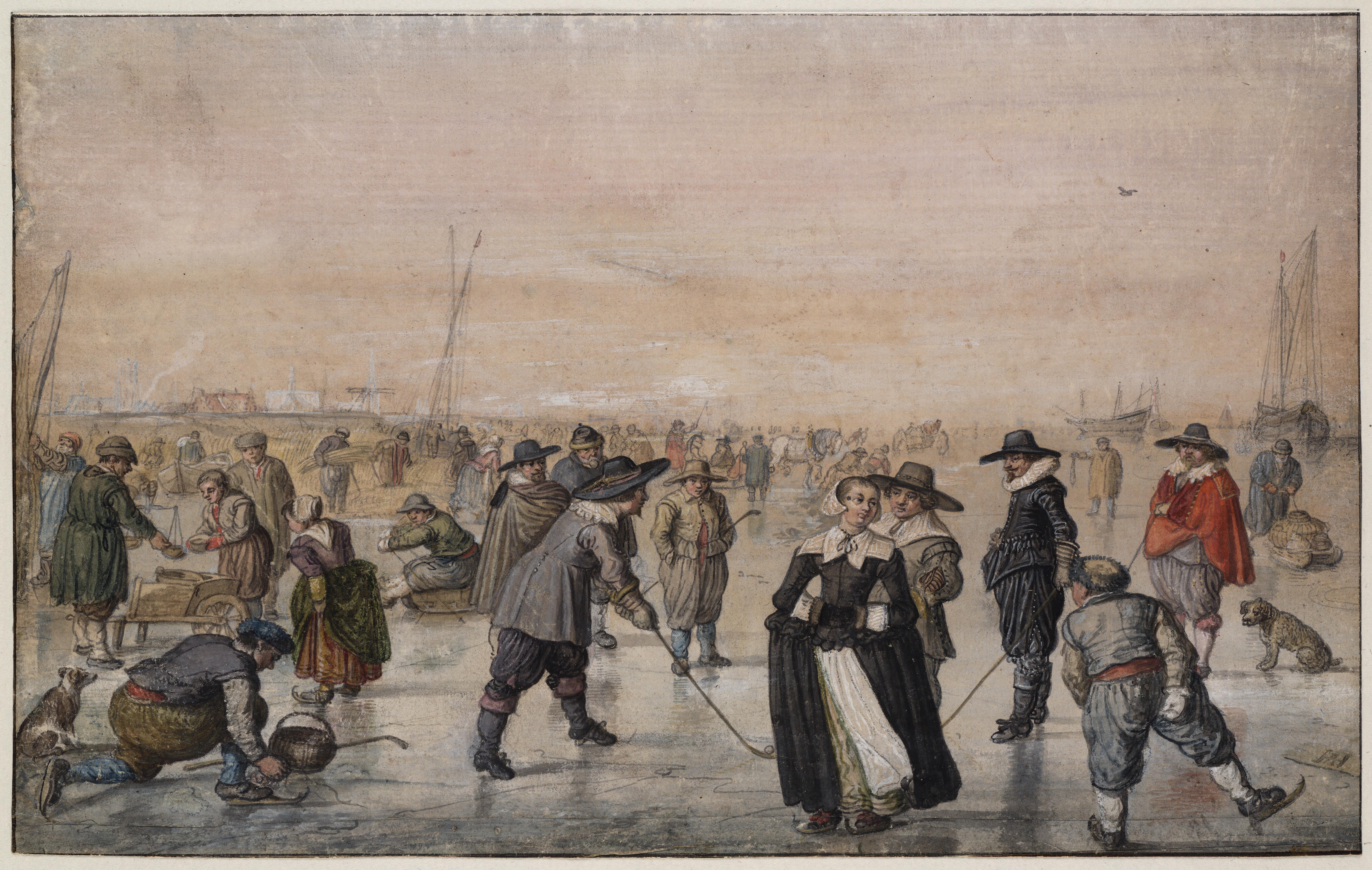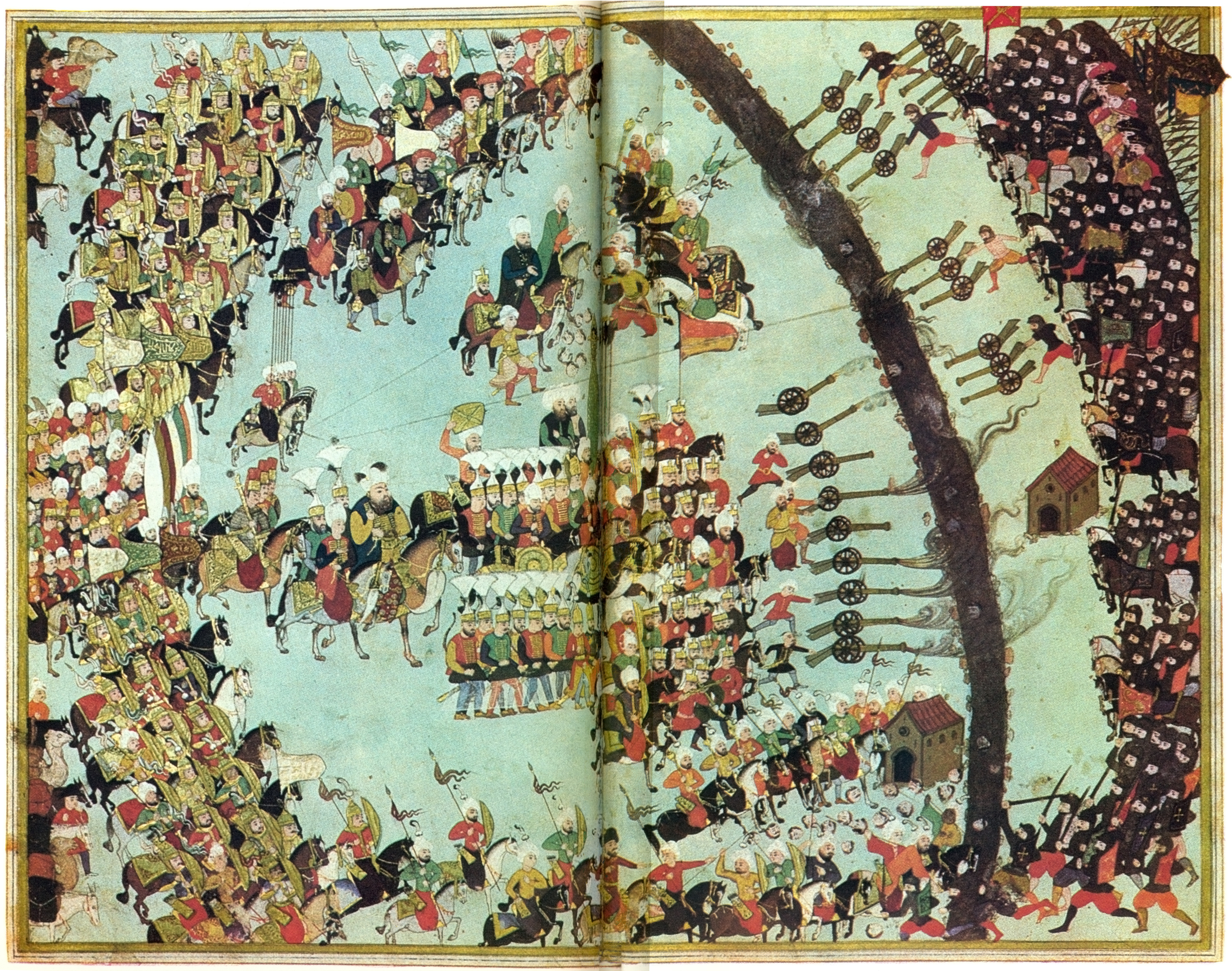|
António Luís De Meneses, 1st Marquis Of Marialva
António Luís de Meneses, 1st Marquis of Marialva and 3rd Count of Cantanhede (13 December 1596 – 16 August 1675) was a member of the Forty Conspirators and a Portuguese general who fought in the Portuguese Restoration War, that ended the Iberian Union between Portugal and Spain. Biography Meneses was born in a noble family - his father was Dom Pedro de Menezes, 2nd count of Cantanhede, and his mother Dona Constança de Gusmão (daughter of Rui Gonçalves da Câmara, 1st count of Vila Franca). Meneses was one of the Forty Conspirators involved in the revolution against the Spanish Habsburgs on 1 December 1640. He took active part in the storming of the residence and the capture of the Duchess of Mantua, who governed Portugal in the name of Philip IV of Spain (Philip III of Portugal). In 1641 he was assigned as general-commander (''mestre-de-campo'') of the Portuguese forces loyal to John IV of Portugal, and he organized the defences against Spanish attacks. H ... [...More Info...] [...Related Items...] OR: [Wikipedia] [Google] [Baidu] |
Marquis Of Marialva
{{for, the Condal title, Count of Marialva Count of Cantanhede (in Portuguese ''Conde de Cantanhede'') was a Portuguese title of nobility created by a royal decree, dated from 6 August 1479, by King Afonso V of Portugal, and granted to '' D.'' Pedro de Menezes, 5th Lord of Cantanhede. In the 17th century this family received new honours: a royal decree of King Afonso VI of Portugal, issued on 11 June 1661, created the title of Marquis of Marialva (in Portuguese ''Marquês de Marialva'') and granted it to '' D.'' António Luís de Menezes, 3rd Count of Cantanhede. Once the 6th Marquis of Marialva died without issue, these two titles are today represented by the 7th Duke of Lafões, Afonso Caetano de Barros e Carvalhosa de Bragança (born 1956), descendant of D. Henriqueta Maria Júlia de Lorena e Menezes, eldest sister to the late 6th Marquis of Marialva. The title is nowadays used by D. Diogo de Bragança, uncle of the 7th Duke of Lafões. List of the Counts of Cantanhede (14 ... [...More Info...] [...Related Items...] OR: [Wikipedia] [Google] [Baidu] |
John IV Of Portugal
John IV ( pt, João, ; 19 March 1604 – 6 November 1656), nicknamed John the Restorer ( pt, João, o Restaurador), was the King of Portugal whose reign, lasting from 1640 until his death, began the Portuguese restoration of independence from Habsburg Spanish rule. His accession established the House of Braganza on the Portuguese throne, and marked the end of the 60-year-old Iberian Union by which Portugal and Spain shared the same monarch. Before becoming king, he was John II, 8th Duke of Braganza. He was the grandson of Catherine, Duchess of Braganza, a claimant to the crown during the Portuguese succession crisis of 1580. On the eve of his death in 1656, the Portuguese Empire was at its territorial zenith, spanning the globe. Early life John IV was born at Vila Viçosa and succeeded his father Teodósio II as Duke of Braganza when the latter died insane in 1630. He married Luisa de Guzmán (1613–66), eldest daughter of Juan Manuel Pérez de Guzmán, 8th Duke o ... [...More Info...] [...Related Items...] OR: [Wikipedia] [Google] [Baidu] |
17th-century Portuguese People
The 17th century lasted from January 1, 1601 ( MDCI), to December 31, 1700 ( MDCC). It falls into the early modern period of Europe and in that continent (whose impact on the world was increasing) was characterized by the Baroque cultural movement, the latter part of the Spanish Golden Age, the Dutch Golden Age, the French '' Grand Siècle'' dominated by Louis XIV, the Scientific Revolution, the world's first public company and megacorporation known as the Dutch East India Company, and according to some historians, the General Crisis. From the mid-17th century, European politics were increasingly dominated by the Kingdom of France of Louis XIV, where royal power was solidified domestically in the civil war of the Fronde. The semi-feudal territorial French nobility was weakened and subjugated to the power of an absolute monarchy through the reinvention of the Palace of Versailles from a hunting lodge to a gilded prison, in which a greatly expanded royal court could be more easil ... [...More Info...] [...Related Items...] OR: [Wikipedia] [Google] [Baidu] |
Portuguese Military Commanders Of The Portuguese Restoration War
Portuguese may refer to: * anything of, from, or related to the country and nation of Portugal ** Portuguese cuisine, traditional foods ** Portuguese language, a Romance language *** Portuguese dialects, variants of the Portuguese language ** Portuguese man o' war, a dangerous marine cnidarian that resembles an 18th-century armed sailing ship ** Portuguese people, an ethnic group See also * * ''Sonnets from the Portuguese'' * "A Portuguesa "" ("The Portuguese ong, ) is the national anthem of Portugal. The song was composed by Alfredo Keil and written by Henrique Lopes de Mendonça during the resurgent nationalist movement ignited by the 1890 British Ultimatum to Portugal concer ...", the national anthem of Portugal * Lusofonia * Lusitania * {{disambiguation Language and nationality disambiguation pages ... [...More Info...] [...Related Items...] OR: [Wikipedia] [Google] [Baidu] |
People From Cantanhede, Portugal
A person ( : people) is a being that has certain capacities or attributes such as reason, morality, consciousness or self-consciousness, and being a part of a culturally established form of social relations such as kinship, ownership of property, or legal responsibility. The defining features of personhood and, consequently, what makes a person count as a person, differ widely among cultures and contexts. In addition to the question of personhood, of what makes a being count as a person to begin with, there are further questions about personal identity and self: both about what makes any particular person that particular person instead of another, and about what makes a person at one time the same person as they were or will be at another time despite any intervening changes. The plural form "people" is often used to refer to an entire nation or ethnic group (as in "a people"), and this was the original meaning of the word; it subsequently acquired its use as a plural form of p ... [...More Info...] [...Related Items...] OR: [Wikipedia] [Google] [Baidu] |
1675 Deaths
Events January–March * January 5 – Franco-Dutch War – Battle of Turckheim: The French defeat Austria and Brandenburg. * January 29 – John Sassamon, an English-educated Native American Christian, dies at Assawampsett Pond, an event which will trigger a year-long war between the English American colonists of New England, and the Algonquian Native American tribes. * February 4 – The Italian opera ''La divisione del mondo'', by Giovanni Legrenzi, is performed for the first time, premiering in Venice at the Teatro San Luca. The new opera, telling the story of the "division of the world" after the battle between the Gods of Olympus and the Titans, becomes known for its elaborate and expensive sets, machinery, and special effects and is revived 325 years later in the year 2000. * February 6 – Nicolò Sagredo is elected as the new Doge of Venice and leader of the Venetian Republic, replacing Domenico II Contarini, who had died 10 days ... [...More Info...] [...Related Items...] OR: [Wikipedia] [Google] [Baidu] |
1596 Births
Events January–June * January 6– 20 – An English attempt led by Francis Drake to cross the Isthmus of Panama ends in defeat. * January 28 – Francis Drake dies of dysentery off Portobelo. * February 14 – Archbishop John Whitgift begins building his hospital at Croydon. * April 9 – Siege of Calais: Spanish troops capture Calais. * May 18 – Willem Barents leaves Vlie, on his third and final Arctic voyage. * June – Sir John Norreys and Sir Geoffrey Fenton travel to Connaught, to parley with the local Irish lords. * June 10 – Willem Barents and Jacob van Heemskerk discover Bear Island. * June 17 – Willem Barents discovers Spitsbergen. * June 24 – Cornelis de Houtman arrives in Banten, the first Dutch sailor to reach Indonesia.. July–December * July 5 – Capture of Cádiz: An English fleet, commanded by Robert Devereux, 2nd Earl of Essex, and Lord Howard of Effingham, sacks Cádiz. * July 14 – King Dominicus Corea (Edirille Banda ... [...More Info...] [...Related Items...] OR: [Wikipedia] [Google] [Baidu] |
Convent Of São Pedro De Alcântara
São Pedro de Alcântara was a Franciscan monastery in the Bairro Alto district of Lisbon, founded in the late 17th century. It is a large Baroque building, with a highly decorated chapel. The monastery was established by António Luís de Meneses, who promised to build the monastery if he prevailed in the Battle of Montes Claros The Battle of Montes Claros was fought on 17 June 1665, near Vila Viçosa, between Spanish and a combined Anglo- Portuguese force as the last major battle in the Portuguese Restoration War. The battle resulted in a decisive Portuguese victory an .... When the religious orders, convents, and monasteries in Portugal were closed by the government in 1833, the monastery buildings were handed over to the Santa Casa da Misericórdia de Lisboa (a society charged with helping the old, the sick, and abandoned or orphaned children). At present the Santa Casa uses the buildings as a home for young girls. Location/address Rua de São Pedro de Alcântara at ... [...More Info...] [...Related Items...] OR: [Wikipedia] [Google] [Baidu] |
Treaty Of Lisbon (1668)
The Treaty of Lisbon of 1668 was a peace treaty between Portugal and Spain that was concluded at Lisbon on 13 February 1668 with the mediation of England in which Spain recognised the sovereignty of Portugal's new ruling dynasty, the House of Braganza. The regent of Spain, Queen Mariana of Austria, the second wife of the late King Philip IV, acted in the name of her young son, Carlos II and oversaw the negotiations on the behalf of Spain. The prince-regent of Portugal, Pedro, the future King Peter II of Portugal, in the name of his incapacitated brother, Afonso VI, represented Portugal. The peace was mediated by Edward Montagu, 1st Earl of Sandwich, an ambassador of Charles II of England. Background By 1640, the Habsburg king, Philip IV of Spain (Philip III of Portugal), could no longer count on the trust, support or loyalty of most Portuguese nobles. The country was overtaxed, and Portuguese colonies had been left unprotected. Portugal, like many of Philip's domains, was o ... [...More Info...] [...Related Items...] OR: [Wikipedia] [Google] [Baidu] |
Battle Of Montes Claros
The Battle of Montes Claros was fought on 17 June 1665, near Vila Viçosa, between Spanish and a combined Anglo- Portuguese force as the last major battle in the Portuguese Restoration War. The battle resulted in a decisive Portuguese victory and is considered one of the most important battles in the country's history. Prelude By 1665, the Portuguese Restoration War had been raging for 25 years. Despite numerous setbacks, King Philip IV of Spain was determined to crush the Portuguese insurrection. After a disastrous campaign in Southern Portugal culminated in the 1662 Battle of Ameixial, the Spanish court re-evaluated the performance of the Spanish Army and came to the conclusion that the war could only be ended by decisive action. The court believed that the Portuguese insurrection could only be ended by the capture of a major Portuguese city or by the complete destruction of the Portuguese Army. Luis de Benavides Carrillo, Marquis of Caracena, a veteran of campaigns in Ita ... [...More Info...] [...Related Items...] OR: [Wikipedia] [Google] [Baidu] |
Battle Of The Lines Of Elvas
The Battle of the Lines of Elvas (), was fought on 14 January 1659, in Elvas, between Portugal and Spain during the Portuguese Restoration War. It ended in a decisive Portuguese victory. Background By 1659, the Portuguese Restoration War which began in 1640 had degenerated into a stalemate. Other than cross border raids, little fighting had occurred and neither the Spanish or Portuguese armies could achieve a decisive battlefield victory. Philip IV of Spain sought to end the conflict by laying siege to and capturing a major Portuguese position, thereby luring out and destroying any Portuguese army that tried to aid the embattled garrison. The town of Elvas was chosen as a target due to the threat it posed to the Spanish city of Badajoz, as seen during the Battle of Montijo in 1644 when a Portuguese army based at Elvas had crossed the border, raided Spanish towns, and attacked a Spanish army. The capture of Elvas and Fort Santa Luzia would also allow the Spanish Army to proceed ... [...More Info...] [...Related Items...] OR: [Wikipedia] [Google] [Baidu] |



_1938.jpg)

